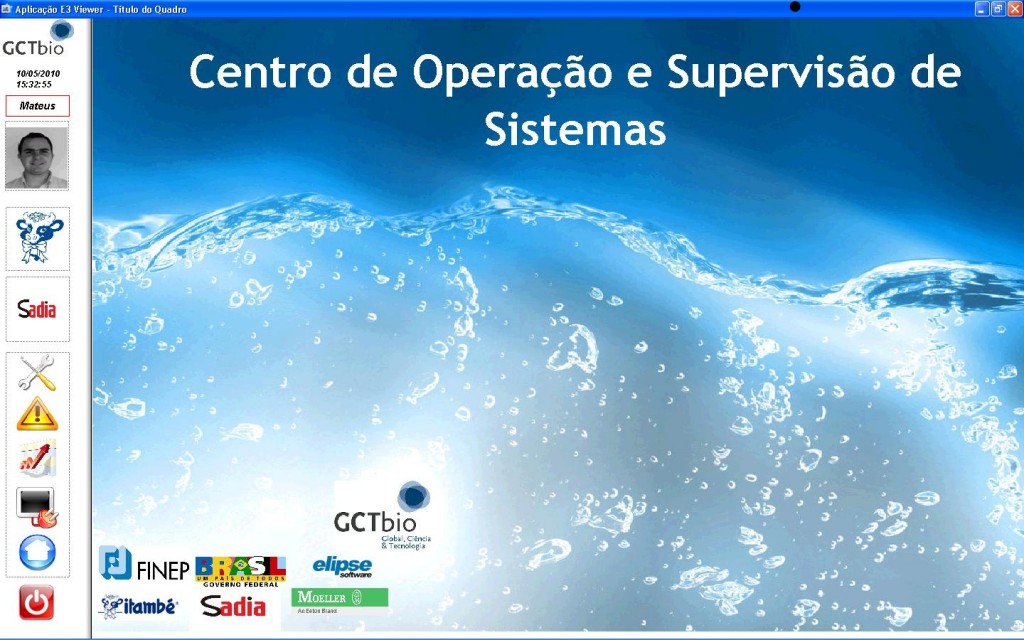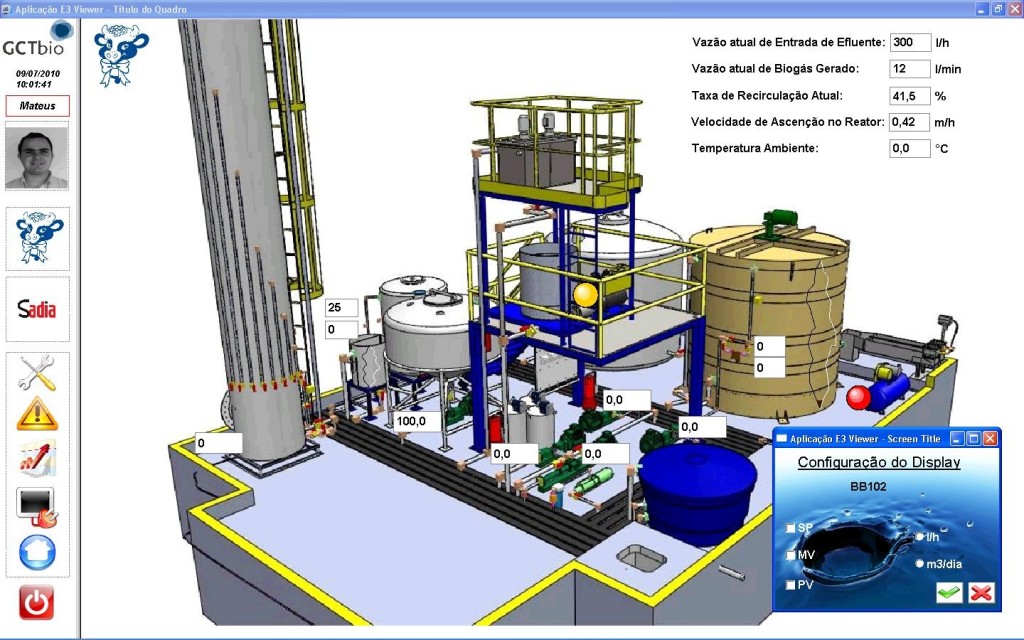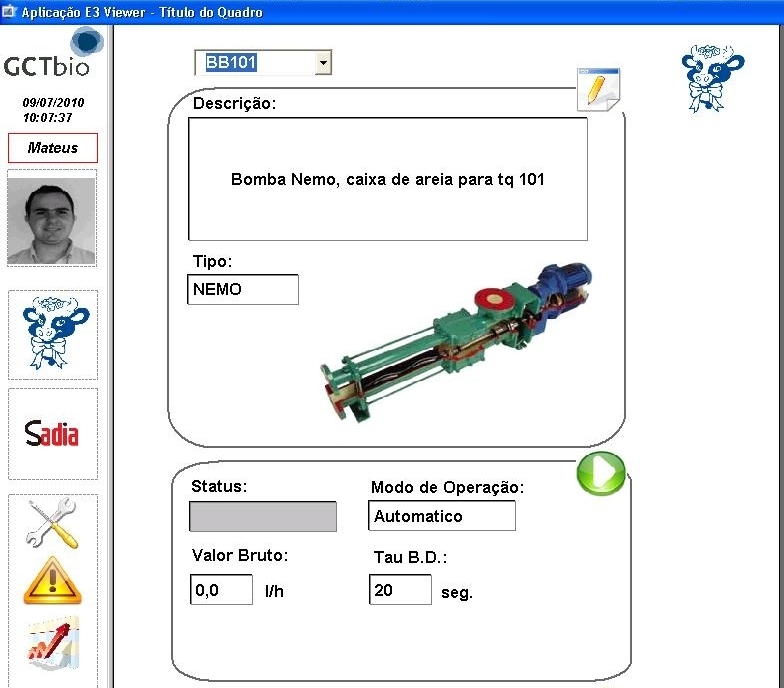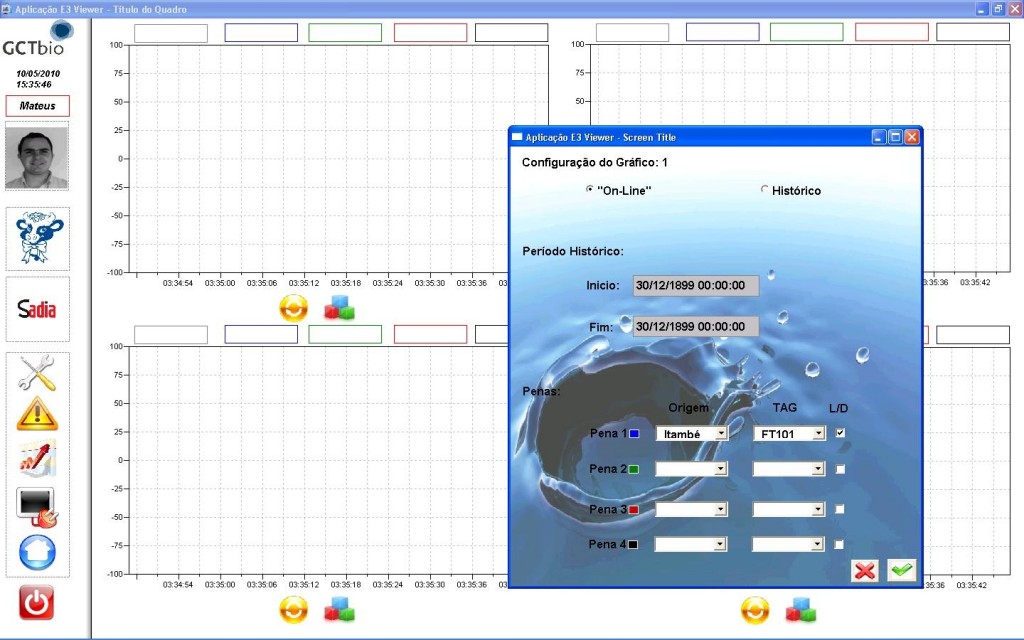Innovative technology from GCTbio supported by Finep uses supervisory system from Elipse
This case presents the application of the Elipse E3 solution to integrate, in real time, the demonstrative plants located on the plant-floor of Sadia and Itambé
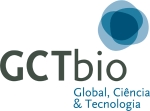
Needs
Developing innovative and viable solutions, technically and economically, for the treatment of industrial effluents with high concentration of oils and fats, associated to co-generation of bioenergy, is the challenge to what GCTbio and partners chose the supervisory system Elipse E3 as the platform of management and automation.
The GCTbio project was selected in the Economical Subvention edict of FINEP, and it has on the semi-industrial escalation its goal to convert scientific knowledge into innovative technology for the industrial market of effluent treatment with high complex organic loads. The demonstration plants of escalation of the technology are placed in the industrial units of Sadia and Itambé, located in the city of Uberlândia/MG. The laboratory of GCTbio, responsible for developing the enzymatic solution, is located in the Biotechnology Pole of Rio de Janeiro – Bio-Rio, while the engineering unit of the company is in Belo Horizonte/MG.
In this context, GCTbio found in Elipse E3 the solution to integrate, in real time, the demonstrative plants located on the plant-floor of Sadia and Itambé. Besides, the partnership with Elipse allowed to meet the demands of the project for a supervisory, control, and data processing system capable of compiling several technologies of operational control of the process with information management technologies with a relatively low cost and with the required reliability by such system.
The development of the new technology counts on investments of around R$ 4,5 million, integrating engineering and biotechnology solutions, with E3 implemented by an engineering and research team of a technological base company, GCTbio.
Solution
According to the system engineer of GCTbio, José Mateus da Silva Neto, one of the main advantages of E3 is allowing the monitoring of processes performed in the PPDs, in real time, via internet. This way, operators can perform any type of maneuver, like opening or closing valves, for example, with no need to leave the Operation Center.
“E3 Remote Domains allow us to concatenate and view all information in the Operation Center, in Belo Horizonte, independent of the place where data is being collected. In this case, Uberlândia”, summarized the GCTbio engineer.
Using the software screens, the user can monitor not only how the equipments of the plants are working, but also the steps which form the treatment. In fact, the residual effluent at the end of the fabrication of powder milk in the Itambé unit as well as the one from the Sadia slaughterhouse are treated differently relative to the processes normally happening in the other ETEs (effluent treatment stations).
Effluent Treatment
The demonstrative treatment system is formed by biological, anaerobic, and aerobic technology, together with enzymatic processes. Because it is a semi-industrial escalation unit, the demonstrative plants have a treatment capacity of 10m3/d of effluents.
E3 Functionalities
The software from Elipse allows operators to control the different steps happening in the Sadia and Itambé plants. Through E3 screens, it is possible not only command different equipments which form the PPDs (valves, pumps, meters, and transformers), but also check the current condition of each equipment, knowing, also, what is the manufacturer, model, and the most proper period for a change.
Besides, the software allows access to a series of information and images which translate several process variables. Data which goes from effluent flow, level found in the tanks, motor pumps power, pH, temperature, amount of biogas and energy released, to the applied dosage of hydrochloric acid, sodium hydroxide, and polymers. Looking for the easy management of this information, E3 displays them as reports, charts, and historics, which still can be saved and printed in PDF or Excel formats.
Added to this control, the software has an alarm system which warns operators in case on any occurrence through the effluent treatment. For this, the system administrator only needs to decide which is the trigger parameter of the alarm for the variable to monitor. The operator, for example, can trigger the alarm in the reactor, in case the effluent pH is different from 7 or in case the effluent level of the tank is above or below the indicated value.
Another feature provided by E3 and highlighted by the GCTbio engineer is the digital signature. A very useful tool for the Operation Center, as it increases the traceability over any maneuver to be performed in the PPDs. That is, in case the operator decides to raise the dosage of HCl in the flotation process, for example, he must type in the system his name, time, and justify the motif which took him to perform that command.
“Besides the easy implementation, E3 allow us to perform our job in an easy and smart way, managing information in an organized and safe manner. This thanks to the different features it offers, like its library objects and digital signature”, said Mateus.
Benefits
- Easy software programming and implementation.
- Possibility of tracking and controlling the effluent treatment performed in the PPDs located in Uberlândia through computer screens installed in the Operation Center, in Belo Horizonte.
- Control of the equipments involved in the processes related to the effluent treatment and energy generation (valves, meters, pumps, and transformers).
- Access to information about each equipment, warning the operators in case there is any need of changing or maintenance.
- Tracking information about the effluent level found on tanks, HCl, Na(OH)2, and polymer dosage, amount of biogas and energy generated.
- Greater traceability of the operations through digital signature.
- Alarm system, warning the operators in case of any occurrence about the equipments or any index outside normality relative to variables involved in the process.
- Report, chart, and historic creation containing all information about effluent treatment, conditions of the equipments and the process variables.
- Possibility to save and print reports and historics in PDF or Excel format.
Datasheet
Client: Sadia e Itambé
Systems Integrator: Global Ciência e Tecnologia Bio S/A
Software: Elipse E3
Number of copies: 3
Platform: Windows XP
Number of I/O points: 200
I/O driver: OPC
